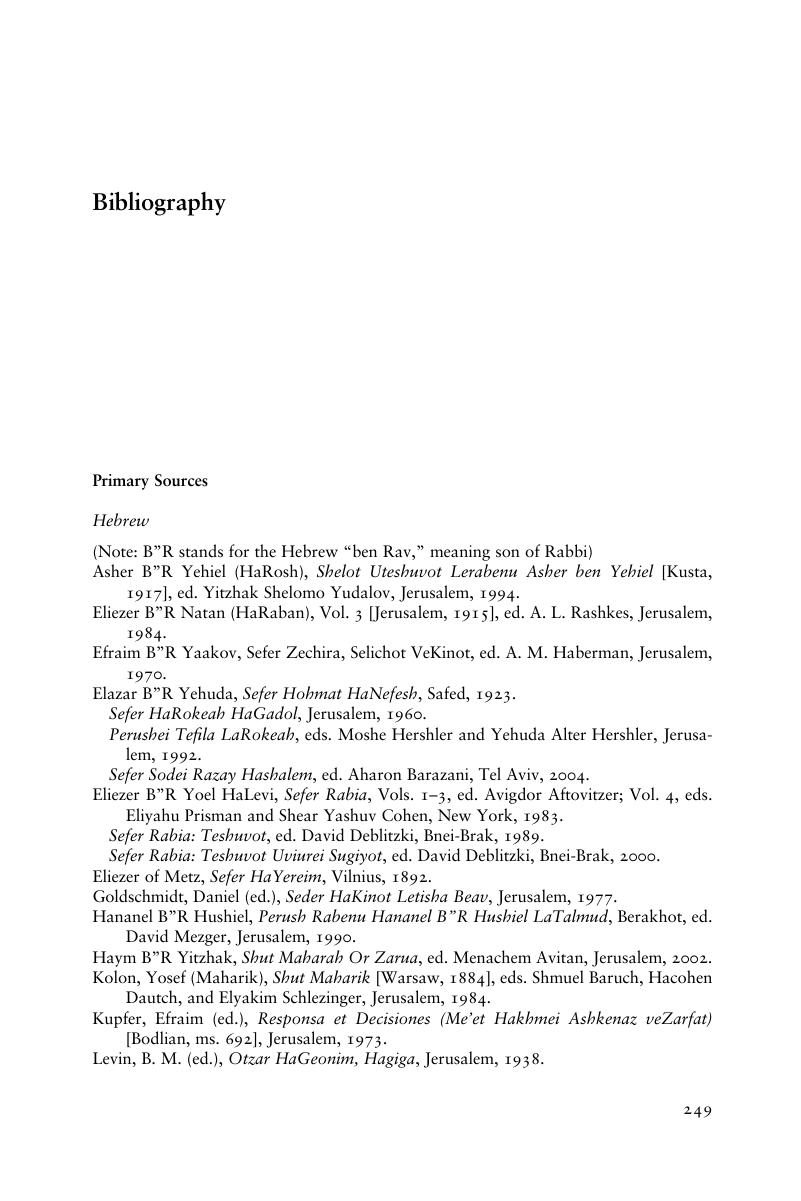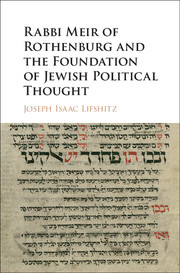Book contents
- Rabbi Meir of Rothenburg and the Foundation of Jewish Political Thought
- Rabbi Meir of Rothenburg and the Foundation of Jewish Political Thought
- Copyright page
- Contents
- Book part
- Introduction
- 1 Historical Background
- 2 Politics as Private Interest
- 3 The Sacred Nature of the Political Sphere
- 4 Politics as an Extralegal Activity
- Book part
- Bibliography
- Name Index
- Subject Index
- References
Bibliography
Published online by Cambridge University Press: 05 October 2015
- Rabbi Meir of Rothenburg and the Foundation of Jewish Political Thought
- Rabbi Meir of Rothenburg and the Foundation of Jewish Political Thought
- Copyright page
- Contents
- Book part
- Introduction
- 1 Historical Background
- 2 Politics as Private Interest
- 3 The Sacred Nature of the Political Sphere
- 4 Politics as an Extralegal Activity
- Book part
- Bibliography
- Name Index
- Subject Index
- References
Summary

- Type
- Chapter
- Information
- Publisher: Cambridge University PressPrint publication year: 2015



